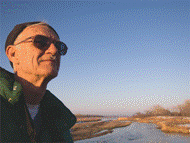Papers in the Biological Sciences

Paul Johnsgard Collection
Document Type
Article
Date of this Version
1-1989
Abstract
Social behaviors in animals include a very wide range of interindividual communications, both within and between species. They include such rather generalized social responses as social flocking or roosting behavior, as well as much more individualized and complex interactions such as courtship, aggression, and parental behaviors. Regardless of their complexity, social interactions involve some level of communication or the transmission and interpretation of social signals. These signals can be transmitted in any of several sensory channels, which in owls are most likely to include visual, acoustic, and tactile modes of communication.
Most and perhaps all owls show distinctive postures when they are alarmed and when in threat. The typical alarm posture of perched owls is one that emphasizes their remarkable capacity for remaining immobile and blending into their environment. This apparently concealing posture, appropriately called the Tarnstellung (camouflage pose) in German, is one in which the owl typically stands vertically upright, often against an upright tree trunk if it is available, with the wing nearer the object of fear drawn sideways and upward toward the bill, often hiding most or all of the relatively pale and often conspicuous underpart coloration. The eyes are often almost entirely shut so as to form slanted slits, even in species having dark-colored eyes. However, in some species such as the great gray owl and long-eared owl the eyes remain fully open, and they may even be blinked in the case of the long-eared owl. Additionally, if any ear tufts are present they are erected to their utmost, and the forehead feathers as well as the "eyebrows" are usually spread, often tending to make these areas less conspicuously contrasting. This feather realignment also often causes a pair of dark lines to pass down from the ear tufts past or through the nearly closed eyes, making them considerably less conspicuous than normally is the case. In species such as the scops owl and screechowls the flattened forehead and eyebrow feathers have a color pattern remarkably similar to that of lichen-covered tree bark, producing an extremely effective facial camouflage. Finally, the rictal (mouth) bristles forming the "moustache" are sometimes pushed forward in such a way as to hide or nearly hide the beak.


Comments
Published in Terra, Vol. 27, No. 3 (Jan.-Feb. 1989), pp. 6-11. Published by the Natural History Museum of Los Angeles County.